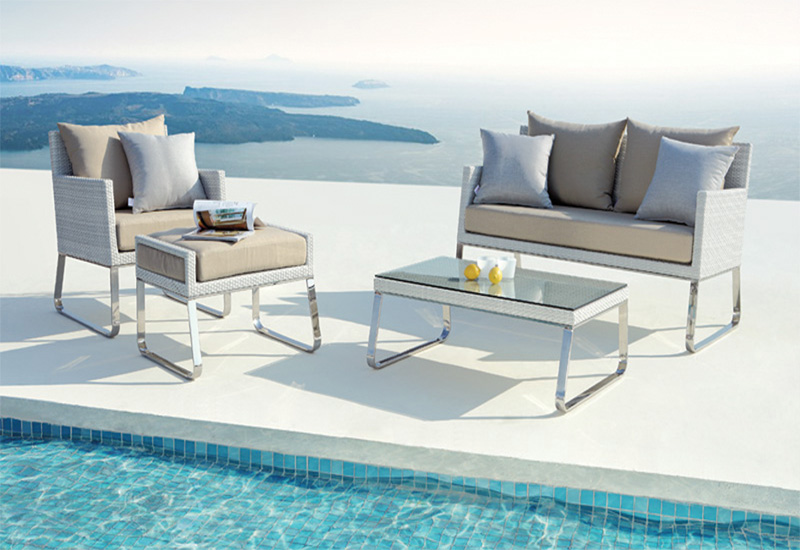 Kudos International's general manager Dan Lacey says outdoor furniture is becoming more like fashion - clients are demanding new styles each season.
Kudos International's general manager Dan Lacey says outdoor furniture is becoming more like fashion - clients are demanding new styles each season.
Materials Matter
Warth also points out that new technology has led to softer fabrics that are still durable — a major plus for guest comfort — and that is something that Africa and Middle East contract consultant for Angel Contract Consultants, Angel Salvador, says is part of a wider trend of improved quality in the sector.
“It is moving in new directions in terms of quality of the product and in the selection of higher handmade textiles to cover better quality cushion inlets,” he explains.
“Not very long ago, outdoor furniture products were minimal and poor in terms of the choice of materials for components.”
Another trend that appears to be going from strength to strength in the region is combining different materials to create new effects. It is a good way for hotels to differentiate themselves from one another, says marketing manager for Intermetal, Cathy di Savino.
“Table and chair combinations, such as when aluminium is combined with rattan or where teak is used in unison with aluminium are on trend,” she reveals.

| Advertisement |
“Properties today are being defined not only by location, but by style and design — incorporating furniture that is unique, but still maintaining the comfort that guests expect is what will set apart one property from another.”
Of course, financial factors drive trends as well as aesthetic ones and Jerry Lim, managing director of the Alma Contract (Mondecasa), believes there is a movement towards outdoor furniture that can also be used indoors.
“Alfresco dining or dining by the pool is becoming increasingly popular,” he explains.
“There is a trend in the merging of outdoor and indoor furniture where beautiful furniture can be used either indoors, as well as outdoors, to help transform underused outdoor spaces, generating more revenue and enhancing dining experiences for guests.
“Right now, stainless steel with sling material seems to have caught on and they are now very stylishly designed and suitable for both indoor and outdoor.”
But not everyone believes that outdoor furniture has necessarily found its next road to travel down. General manager of Kudos International, Dan Lacey, believes that the sector is at a crossroads.
“Furniture is becoming much like fashion, with the market demanding new styles and designs every season,” he begins.
“The problem is that the next generation of materials for use in outdoor furniture has not yet been identified. All-weather wicker has been available in the market for the past six or seven years now and so the market is flooded with products of varying qualities and innovative design is much harder to source.
Plagiarism of design is commonplace. Teak products are much more limited, both due to the nature of the material itself and the need for on-going maintenance and aluminum — both cast and folded product — also has limitations due to the climate.”
Lacey says that this has led to manufacturers searching for the “next new” material, which will dominate the market in the future in the same way that all-weather wicker has done.
In the interim, Kudos has come up with three different solutions, according to Lacey.
“Simple designs and mixing materials such as wicker, teak, stainless steel and aluminium is the first. They are also much harder to copy, so are less prone to becoming a commodity item, knocked off by all and sundry,” he explains.
“Injected Rattan is a new technique developed by Grupo Resol (a Kudos supply partner from Spain), which offers injected moulded polypropylene products in a rattan style. Being strong, durable and very competitive, this is a new product which will have a major impact on the market.”
The final initiative is LED furniture. While Lacey admits LED decorative items have been in the market for years already, he says that the “logical expansion of this into furnishing products has been slow to follow”.
Article continues on next page ...









 Search our database of more than 2,700 industry companies
Search our database of more than 2,700 industry companies









